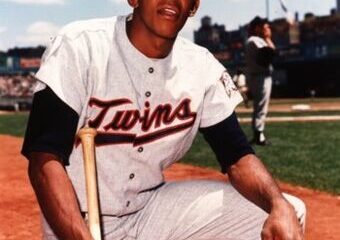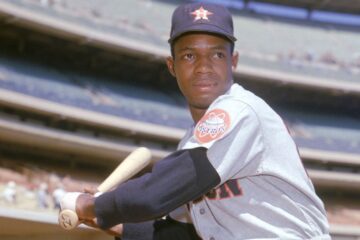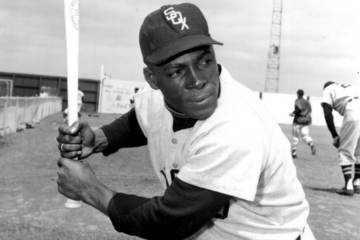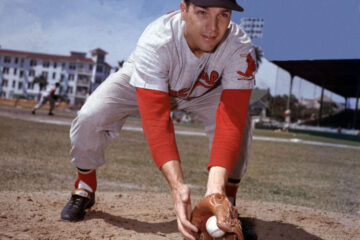The Hall of Fame Index: Jeff Bagwell
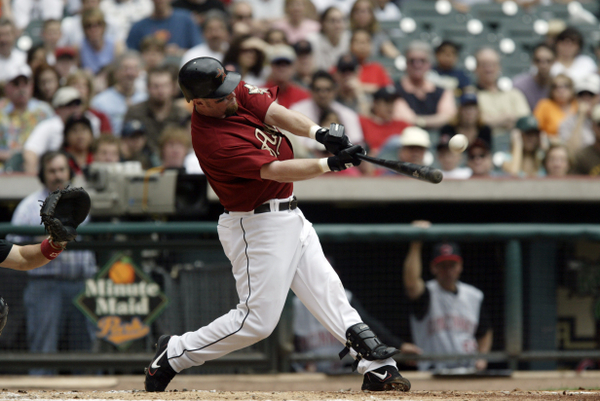
Every once in a while I love to indulge myself. So, instead of focusing on a current player that might or might not be in the Hall of Fame, I’m going to focus on a local hero that has been on the outside looking in for several years now. Jeff Bagwell watched his teammate and friend Craig Biggio get inducted into the Hall of Fame. This is despite the fact that his credentials are arguably better than Biggio’s.
It’s hard to say that I wrote The Hall of Fame Index with any specific player in mind. I’m a big believer in charting the data and letting it take you wherever it goes. That being said, Bagwell is the type of player it was designed to highlight. Hall of Fame voters and fans alike are captivated by certain statistical milestones. So, if you get to 3000 hits or 500 home runs you probably have an automatic ticket. Bagwell had neither of those, but when you look at the index you see that he fares exceptionally well.
For those of you just joining us, the index adds WAR from Baseball Reference, Baseball Prospectus, and Fangraphs to come up with a career value total. Those same sources give us the player’s best ten-year stretch for a peak value total. The career value and peak value is added together for a total Hall of Fame index. For our purposes here, we only look at the BBWAA selections and the player we want to highlight (Bagwell) instead of the entire Hall of Fame class. If you purchase the book, you will get those players as well in addition to others on the outside looking in.
Career Value
| BR | BP | FG | Total | |
| Lou Gehrig | 112.4 | 114.4 | 116.3 | 343.1 |
| Jimmie Foxx | 96.4 | 99.1 | 101.8 | 297.3 |
| Frank Thomas | 73.7 | 73.1 | 72.0 | 218.8 |
| Eddie Murray | 68.3 | 65.1 | 72.0 | 205.4 |
| Willie McCovey | 64.4 | 62.3 | 67.4 | 194.1 |
| Harmon Killebrew | 60.3 | 65.0 | 66.1 | 191.4 |
| Hank Greenberg | 57.5 | 59.3 | 61.1 | 177.9 |
| Bill Terry | 54.2 | 55.6 | 57.0 | 166.8 |
| Tony Perez | 53.9 | 47.7 | 58.9 | 160.5 |
| George Sisler | 54.5 | 53.2 | 51.9 | 159.6 |
| Jeff Bagwell | 79.6 | 78.1 | 80.2 | 237.9 |
According to the index, Bagwell is the third best first baseman from the modern era. There are a few 19th century first basemen that may end up besting him, but we get into murky ground when we start considering those guys. This is all for a player that barely had 2000 hits and didn’t reach 500 home runs. It’s hard to imagine how this could even be possible when you look at the names immediately before him and after him on the list.
The reasoning is fairly simple. WAR takes into account everything a player does on a baseball field and during his prime there was nothing Bagwell couldn’t do well. He wasn’t an all-world defender, but he was one of the better fielding first basemen in the league. He could run the bases better than any first baseman in the game and he was arguably one of the better base runners in the game as a whole. He hit for average. He hit for power. He got on base consistently. While a contemporary like Frank Thomas may have put up superior offensive numbers, Bagwell literally lapped him on the base paths and with the glove.
Of course, most historians acknowledge this fact even if some don’t support him. Some think he didn’t sustain it for long enough while others believe he used PEDs. The PED suspicions play into the rapid decline as that is one of the hallmarks of use. You also have the sudden development of power (Bagwell never reached double digits in home runs in the minors), and the association with teammates known to use (Ken Caminiti and Jason Grimsley). I could go into the specifics and the relevance of these particular charges, but I won’t. Suffice it to say, any one of those charges could be levied against any number of guys.
Peak Value
| BR10 | BP10 | FG10 | Total | |
| Lou Gehrig | 90.1 | 91.4 | 92.7 | 274.2 |
| Jimmie Foxx | 73.7 | 75.7 | 77.7 | 227.1 |
| Frank Thomas | 56.2 | 55.7 | 57.3 | 169.2 |
| Hank Greenberg | 51.5 | 53.3 | 55.1 | 159.9 |
| Bill Terry | 50.4 | 51.6 | 52.8 | 154.8 |
| George Sisler | 50.7 | 49.9 | 49.0 | 149.6 |
| Willie McCovey | 49.3 | 49.3 | 49.6 | 148.2 |
| Harmon Killebrew | 45.8 | 49.0 | 49.0 | 143.8 |
| Eddie Murray | 46.4 | 47.6 | 49.3 | 143.3 |
| Tony Perez | 44.6 | 40.0 | 48.1 | 132.7 |
| Jeff Bagwell | 62.0 | 63.1 | 64.1 | 189.2 |
To give you an idea of what we are dealing with, Bagwell’s peak value would be 7th on the all-time list here in career value. What is a crime is that Bagwell and Thomas were essentially eligible at the same time and Thomas was seen as an automatic vote with his 500+ home runs and clean reputation. I could be Pollyannaish about Bagwell, but I will acknowledge anything is possible on PED use. The same was true of Mike Piazza before his selection and others certainly have been under suspicion.
That being said, when you take a step back there seems to be little rhyme or reason to who gets to be stained by suspicion and who gets to be beyond reproach. It’s one thing for players that have either admitted to use, been implicated in the Mitchell Report, or have tested positive. I don’t have a ton of sympathy for those folks although I don’t have the same hardline stance that some do. Yet, for those that have been accused with little proof it is definitely a cruel existence for those folks.
There are those that will swear that Frank Thomas was the better player and he does have some pretty impressive numbers, but for those that watched Bagwell play every day they know better. Casual fans react to WAR the same way that Baby Boomers react to computers. They know it exists but they don’t really trust it. You can’t touch it or calculate it without a graphing calculator and slide rule, but when you think about it you can see it. It’s all the little things you often take for granted. It’s going first to third on a single. It’s successfully picking a ball out of the dirt that another first sacker wouldn’t. It’s starting a successful double play with a throw to second. It’s drawing a free pass on a tight pitch and then turning around and stealing second. Add all those little things up and it becomes a lot. These are all things Bagwell would do that Thomas couldn’t. These are things Astros fans watched Bagwell do on a nearly daily basis.
The Hall of Fame Index
| Career | Peak | Total | |
| Lou Gehrig | 343.1 | 274.2 | 617.3 |
| Jimmie Foxx | 297.3 | 227.1 | 524.4 |
| Frank Thomas | 218.8 | 169.2 | 388.0 |
| Eddie Murray | 205.4 | 143.3 | 348.7 |
| Willie McCovey | 194.1 | 148.2 | 342.3 |
| Hank Greenberg | 177.9 | 159.9 | 337.8 |
| Harmon Killebrew | 191.4 | 143.8 | 335.2 |
| Bill Terry | 166.8 | 154.8 | 321.6 |
| George Sisler | 159.6 | 149.6 | 309.2 |
| Tony Perez | 160.5 | 132.7 | 293.2 |
| Jeff Bagwell | 237.9 | 189.2 | 427.1 |
I’m pretty passionate about the Hall of Fame and so I often give the BBWAA a hard time on some of their decision making. I did it with Tony Perez at first base and I could pick one or two guys at almost every position I disagree with. The reverse is also true. I can find one or two players at every position that are inexplicably out of the Hall of Fame. As time has gone on, some of those oversights have been corrected.
The hope is that Bagwell will be that guy this next season. He has come pretty close as just about every player that has ever gotten a percentage as high as him have eventually gotten in. Fair enough. Bagwell’s case is about as impassioned plea as I can make to ignore the counting numbers when it comes to gauging greatness. Sometimes greatness isn’t as obvious as it seems.


